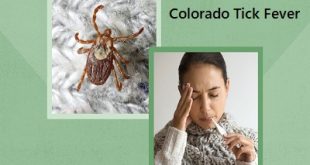Definition
Rabies in Human – Rabies is an acute viral illness affects all the warm blooded animals including man. It spreads via rabid animal bites to other animals and humans too. It is a zoonotic disease caused by a rabies virus of the Lyssavirus genus, belongs to the family Rhabdoviridae. Rhabdo is a greek word and is identified with characteristic rod or bullet shaped.
This virus is found mostly in domestic animals than the wild animals. Rabies virus is transmitted to humans through the contact rabid animal’s saliva with their bites, broken skin, scratches and mucous membrane.
Incubation period
The incubation period of rabies in humans is generally 20–60 days. However, fulminant disease can become symptomatic within 5–6 days.
Pathogenesis
After the inoculation of virus loaded saliva on the skin of human by bites and scratches where it replicates for hours to weeks. Research suggests that the rabies virus infects the muscle cells at the wound site and replicates before it invades the peripheral nervous system and central nervous system.
Budding of rabies virus starts in the plasma of muscle cells and migrates to unmyelinated nerve ending at the neuromuscular or at the muscle spindles. Alternatively it may travel directly to the nervous system through the nearby motor neuron or sensory neuron in the ganglion at the base of spinal cord where it again starts its replication. During the course of replication it may be transported back into the site of wound or to the brain through central nervous system. The possible receptors for the rabies virus in the brain are gangliosides, phospholipids, and acetylcholine receptors.
Aerosol transmission of virus occurs when they invade the body through epithelium lining of nasal and is then transported to olfactory bulb. The virus now proliferate in the neurons of olfactory bulb before they spreads in the brain.
After the rabies virus infected the brain, it spreads all over the body via efferent neural pathways. During this stage the salivary gland tears, skin, adrenal glands, heart muscles, hair follicles and kidneys can be infected with rabies virus. But the virus cannot be identified in blood cells.
The competition between the host RNA and the rabies RNA makes impaired neural functions. It is aggravated by body’s immune system components such as cytokines and nitric oxide in response to rabies virus acting as a toxin in CNS. Fatality from rabies is due to the neurons functional alteration but not because of the structural damage caused by the rabies virus.
History
Rabies is a Latin word ‘To rage’ originated over 4000 years ago. During the 16th century, an Italian physician Girolamo Fracastoro was discovered rabies as a fatal disease which affects humans as well as animals. The wound is called as “an incurable wound”.
In 1885, a French biologist named Louis Pasteur created the first vaccine for rabies. Joseph Meister a 9 year old boy at the time was found with wound made by a bite of rabid dog. His parents went to Pasteur to get a help for their son. Pasteur thought if he injected a weak sort of the virus from one passionate animal to a different, the second animal could be able to facilitate repel the illness. This experiment worked for Joseph. This was the start of the extremely effective vaccines we’ve got these days.
Epidemiology
Rabies is further prevailing at intervals the developing world than in industrial countries. the world Health Organization (WHO) estimates that zoonosis is accountable for thirty 5,000-50,000 deaths annually worldwide that gross underreporting is maybe going. A calculable ten million individuals receive post exposure prevention every year once being exposed to animals with suspected zoonotic disease. Susceptible dogs square measure the most important reservoir for zoonotic disease.
Global reservoirs of rabies virus are as follows:
- Europe – Foxes, bats
- Middle East – Wolves, dogs
- Asia – Dogs
- Africa – Dogs, mongooses, antelopes
- North America – Foxes, skunks, raccoons, insectivorous bats
- South America – Dogs, vampire bats
How Do People Catch Rabies?
- Animals with rabies transfer the virus to other animals and to people via saliva following a bite or via a scratch. However, any contact with the mucous membranes or an open wound can also spread the virus.
- The transmission of this virus is usually from animal to animal and animal to human. While human-to-human transmission of the virus is highly rare.
- For humans who contract rabies, a bite from an unvaccinated dog is the most common culprit.
High-risk animals include:
- Bats
- Raccoons
- Foxes
- Skunks
- Woodchucks
- Non-domesticated (wild) dogs
- Domestic animals like cats, dogs, and cattle can become rabid if bitten, so it is important to vaccinate them against rabies.
Risk factors of rabies in human
Factors that can increase your risk of rabies include:
- Traveling to or living in developing countries where rabies is prone, including countries in Africa and Southeast Asia
- Activities which put you in contact with wild animals that may have rabies, such as exploring caves where bats live or camping without taking precautions to keep wild animals away from your campsite
- Working in a laboratory with the rabies virus
- Wounds in the head or neck, which may help the rabies virus travel to your brain more quickly
Symptoms of rabies in human
The first symptoms of rabies may be very similar to the flu and may last for days. Later signs and symptoms may include:
- Fever
- Headache
- Nausea
- Vomiting
- Agitation
- Anxiety
- Confusion
- High level of excitement
- Hyperactivity
- Difficulty swallowing
- Muscle cramps
- Excessive salivation
- Fear of water (hydrophobia) because of the difficulty in swallowing
- Hallucinations
- Insomnia
- Partial paralysis
Complications of rabies in human
- Increased pressure within the skull (intracranial pressure)
- Irregular heartbeats (cardiac arrhythmias)
- Seizures
- Respiratory failure
- Acute renal failure
- Congestive heart failure
- Gastrointestinal hemorrhage
- Coma
Exams and Tests
- If an animal bites you, try to collect as much information about the animal as possible. Call your local animal control authorities to safely capture the animal. If rabies is suspected, the animal will be watched for signs of rabies.
- Immunofluorescence test is used to look at the brain tissue of an animal for which it is euthanized. This test can reveal whether the animal had rabies or not.
- The doctor or nurse examine you thoroughly and look at the bite. Then the wound will be cleaned and treated.
- The same test used on animals can be done to check for rabies in humans, using a piece of skin from the neck. Doctors may also look for the rabies virus in your saliva or spinal fluid, although these tests are not as sensitive and may need to be repeated.
- A spinal tap is performed to detect the infection in the spinal fluid.
Treatment for rabies in human
Post-exposure prophylaxis (PEP)
Post-exposure prophylaxis (PEP) is the immediate treatment of a bite victim after rabies exposure. This prevents virus entry into the central nervous system, which results in imminent death. PEP consists of:
- Extensive washing and local treatment of the wound as soon as possible after exposure;
- A course of potent and effective rabies vaccine that meets WHO standards; and
- The administration of rabies immunoglobulin (RIG), if indicated.
As soon as a bite is received, a series of shots will be prescribed to prevent the virus from thriving. The shots include:
- A person who is exposed and has never been vaccinated against rabies should get 4 doses of rabies vaccine – one dose right away, and additional doses on the 3rd, 7th, and 14th days. They should also get another shot called Rabies Immune Globulin at the same time as the first dose. this will prevent the virus from infecting the individual and will be delivered as soon as possible, close to the bite wound.
- A person who has been previously vaccinated should get 2 doses of rabies vaccine – one right away and another on the 3rd day. Rabies Immune Globulin is not needed.
There are three vaccines in current use approved by the FDA.
- Human diploid cell vaccine (HDCV) or Imovax-most widely used
- Michigan Biologic Products Institute (monkey cell cultures)
- Inactivated diploid cell origin (DCO)
In most cases, finding out whether the animal has rabies will not be possible. It is safest to assume the worst and begin the course of shots.
Extensive wound washing
This involves first-aid of the wound that includes immediate and thorough flushing and washing of the wound for a minimum of 15 minutes with soap and water, detergent, povidone iodine or other substances that kill the rabies virus.
Prevention of rabies in human
You can prevent being infected with the rabies virus by remembering these tips:
- Do not feed wild animals and stay at a safe distance when observing them
- Guide children and teach them not to approach or touch animals they do not know
- Stay away from animals having signs of rabies
- Do not bring wild animals to home
- If you suspect an animal is rabid, stay away from it and contact the local authorities
- If you have pets or livestock, make sure to vaccinate them regularly
- Whenever you meet with wound wash it with soap and water and maintain good hygiene
 Diseases Treatments Dictionary This is complete solution to read all diseases treatments Which covers Prevention, Causes, Symptoms, Medical Terms, Drugs, Prescription, Natural Remedies with cures and Treatments. Most of the common diseases were listed in names, split with categories.
Diseases Treatments Dictionary This is complete solution to read all diseases treatments Which covers Prevention, Causes, Symptoms, Medical Terms, Drugs, Prescription, Natural Remedies with cures and Treatments. Most of the common diseases were listed in names, split with categories.








thanks a lot it’s very good information bez we living in village nd we don’t know about this today I study this I know that to prevent from this so thank a lot ,
You didn’t include the incubation period for rabies virus in human body
Thank you for your information. Now it is updated.
Dear ,what could be interval period between bite and first dose ,how many hours or days or no any fix time infected can be given ARV at any time after exposure.
A person who is exposed and has never been vaccinated against rabies should get 4 doses of rabies vaccine – one dose right away, and additional doses on the 3rd, 7th, and 14th days. They should also get another shot called Rabies Immune Globulin at the same time as the first dose.
A person who has been previously vaccinated should get 2 doses of rabies vaccine – one right away and another on the 3rd day. Rabies Immune Globulin is not needed.
this is very usefull information.
bt pliz update it with incubation period.
how do i identify a dog who is infected (symptoms)
The following are some of the symptoms of rabies in the dog:
Pica
Fever
Seizures
Paralysis
Hydrophobia
Jaw is dropped
Inability to swallow
Change in tone of bark
Muscular lack of coordination
Unusual shyness or aggression
Excessive excitability
Constant irritability/changes in attitude and behavior
Paralysis in the mandible and larynx
Excessive salivation (hypersalivation), or frothy saliva
can a child be information infected l
Yes, people of any age can be infected with rabies when contacted with rabies virus.
what about the incubation period of rabies
Usually, people develop rabies within six months of exposure (e.g. from a bite from an infected animal like a dog or a bat). However, longer incubation periods can occur. Some rabies cases with purportedly long incubation periods can’t be confirmed because the person may have been exposed to the virus multiple times.
the best ever me,it has helped me in my course